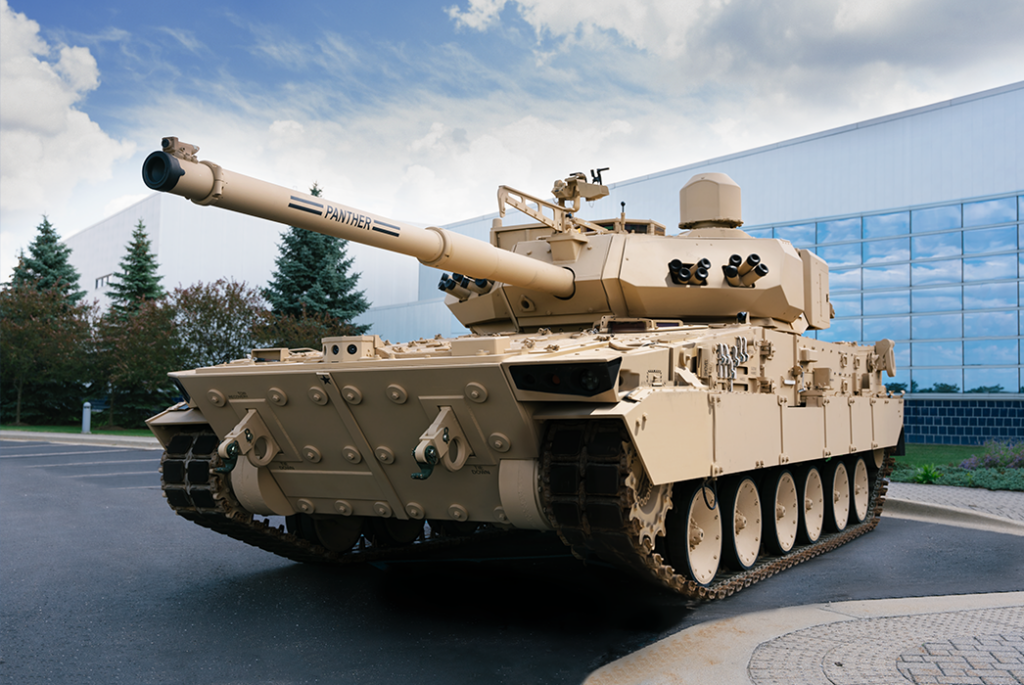What’s controversial about saying tanks aren’t the future of war? They aren’t, are they?
There's been talk decades ago about the obsoletion of tanks and various think-tanks, defense departments and consultancies have studied scenarios in which a tank may or may not be relevant.
Basically, to simplify this as much as possible:
-Taking positions, penetrating a frontline and covering areas always require people. We're not at the level of technology (yet, or anytime soon) where autonomous robots/vehicles can effectively control/cover a frontline position. Vehicles lack tactical flexibility that people offer, and all vehicles are designated for force multiplication.
-Unless you're a psychopathic military, the most important thing when it comes to people is survivability. So a few things are needed to be considered here. Making sure soldiers survive reaching the frontline. Making sure that once the soldiers are at the frontline, they have the necessary protection in a hostile environment to survive and thirdly is you have the necessary firepower in order to complete your mission objective and overwhelm the enemies protection and defences.
-The first element, of getting soldiers to the frontline safely is mostly done through APC's and things like MRAPs etc. APC's allow flexible tactical mobility with adequate protection against indirect long range fire such as artillery. It doesn't protect you very well against direct fire, but if you're shipping soldiers to the frontlines direct fire will be rare, apart from the case of air strikes. That is where tactical (and strategic) level air defense comes in, which also offers protection during this phase of battle.
-The second element of survivability is protection in battle. This is where things like IFV's, AFV's come into play. APC's ferry units to the frontline. IFV's and AFV's exist so that on the frontline, soldiers have adequate protection and some element of firepower in battle itself. It's not just limited to vehicles, but even things like adequate basic equipment (body armour) contributes to the survivability. Again, air defence (whether in the form of anti-air or defense in the form of air superiority is also important) is crucial, because air power is a massive force multiplier.
-Thirdly, a unit must have the adequate firepower to fulfil their mission objective, whether defensive or offensively. This can come in the form of many things, like artillery support, air support, indirect fires, ATGM's, etc. One thing which became obvious during WWII and well beyond is that direct firepower (the difference between direct fire and indirect fire is quite defined, but for laymans terms you can reduce it to the gunner can see the target with their own eyes for direct fire, and they cannot for indirect fire) was needed to support the people on the frontlines. Some mission profiles do not suit air support or artillery support. For example, concealed bunkers or enemy hardpoints that are hidden behind a mountain. Things like autonomous drones/FPV's are not going to be able to do this.
-So this direct fire support has a few requirements. It needs to be able to be flexible and do missions ad-hoc at a units request very quickly, something which air support doesn't cover. It needs to be able to keep up in the frontlines and move at the same pace as the other vehicles - there's no point having direct fire support if its chugging along at 10kmph whilst the other vehicles are 50km in front. It needs to have adequate protection in place so that they are not easily disabled/destroyed thus rendering a units direct fire support ended at the start of the battle. It needs to have the flexbility to engage in a wide range of different mission profiles - whether attacking a strongpoint or an open field against a different wide variety of opponents.
-So out of this requirement was born two different things. A "Tank" and an "Assault gun". An assault gun fulfils some requirements - the necessary protection, direct firepower and mobility but it's not suitable for other things like engaging mass enemy infantry. The Tank (or modern MBT rather), is less mobile due to its heavier weight and extra armaments, but has the tactical flexbility to engage in far more mission profiles. Using the US as an example, you have the M1 Abrams, a heavy MBT for its general purpose work. But over the last decade they found that in some terrains, the MBT isn't mobile enough to keep up with the rest of the forces, hence a new requirement was created. The project "Mobile Protected Firepower" (MPF) was created to meet the requirement of having mobile direct fire support for ground units but also lighter so that it can operate in more austere terrain. Out of this project, spawned the M10 Booker. This has just entered service.
- You might think this is a tank, it looks like one right? Well, not really. It doesn't meet the classification of an American "Tank" so they decided to call it a "Light Tank", but its more akin to an Assault Gun. It, like the M1 is necessary because you always need direct fire support that Drones, Air support, missiles cannot provide. Close fire support with missiles and aircraft is very risky, as seen in Desert Storm with the high number of friendly fire incidents. The most intense and dense air/missile support is, the more friendly fire there will be.
-So ultimately, to sum up, as long as there are people on the frontlines, there is going to be a requirement for direct fire support. A direct fire support requires survivability as a platform in itself, it needs to be mobile, fast, flexible, and be able to be attached at a lower organizational unit level for tactical flexibility. That requirement, despite decades of people trying to find design alternatives, always ends up being in the form of a Tank, or something that looks akin to a Tank.


